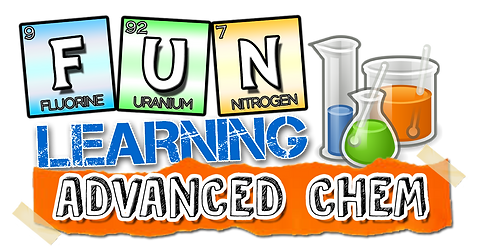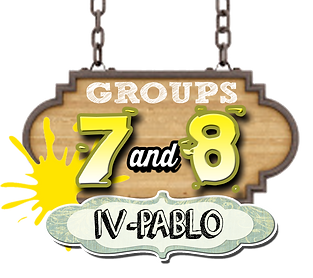


What is Gas Stoichiometry?
Gas stoichiometry uses the ideal gas law to establish the number of moles of a gas in a given volume at any temperature and pressure. It allows us to determine quantities used and formed in chemical reactions.
The formula for ideal gas law is:
PV=nRT
where in:
-
P=pressure
-
V=volume
-
T=temperature
-
n=number of moles of gas
-
R=Gas Constant ( 0.0821 L.atm/ K. mol )
These are the steps in solving Gas Stoichiometry:
1. Balance the equation for reaction.
2. Convert all amounts to moles.
3. Compare molar amounts using stoichiometry ratios from the balanced equation.
4. Convert the moles into the units required, using the ideal gas law.
Example Problems:
-
Ammonia (NH3) gas can be synthesized from nitrogen gas + hydrogen gas. What volume of ammonia at 450 kPa and 80°C can be obtained from the complete reaction of 7.5 kg hydrogen?
First we need a balanced equation:
2Na(s) + 2H2O(l) --> H2(g) + 2NaOH(aq)
Ideal Gas Formula:
PV=nRT Given: P=101.3 kPa, V=20.0 L, T=273 K
(101.3 kPa)(20.0 L) =0.893 mol H2 or mol= 20.0 L (1 mol) =0.893 mol H2
(8.31 kPa•L/K•mol)(273 K) 22.4 L
Dimensional Analysis:
g Na=0.839 mol H2 x 2 mol Na x 22. 99 g Na =41.1 g Na
1 mol H2 1 mol Na
-
How many grams of Al2O3 are formed from 15.0 L of O2 at 97.3 kPa & 21°C?
4 Al + 3 O2 --> 2 Al2O3
Ideal Gas Formula:
PV=nRT Given: P=97.3 kPa V=15.0 L T=21°C=294 K (97.3 kPa) (15.0 L)=n (8.315dm3 × kPa/mol × K) (294K) n=0.597 mol O2
Dimensional Analysis:
0.597 mol O2 x 2 mol Al2O3 x 101. 96 Al2O3 =40. 6 g Al2O3
3 mol O2 1 mol Al2O3
What are Limiting and Excess Reagents?
Limiting Reagent - the reagent that runs out first in a chemical reaction, thus determining the amount of product produced. The reaction will stop when all of the limiting reagent is consumed.
Excess Reagent - the reagent that there is a quantity of left over after a chemical reaction. The excess reagent remains because there is nothing with which it can react.
Steps in finding limiting and excess reagent:
-
Determine the balanced chemical equation for the chemical reaction.
-
Convert all given information into moles (most likely, through the use of molar mass as a conversion factor).
-
Calculate the mole ratio from the given information. Compare the calculated ratio to the actual ratio.
-
Use the amount of limiting reactant to calculate the amount of product produced.
-
If necessary, calculate how much is left in excess of the non-limiting reagent.
Examples:
-
A 2.00 g sample of ammonia is mixed with 4.00 g of oxygen. Which is the limiting and excess reagent?
First, we need to create a balanced equation for the reaction:
4 NH3(g) + 5 O2(g)--->4 NO(g) + 6 H2O(g)
a) 2.00 g NH3 x 1 mol NH3 x 4 mol NO x 30.0 g NO=3. 53 g NO (excess reagent)
17.0 g NH3 4 mol NH3 1 mol NO
b) 4.00 g O2 x 1 mol O2 x 4 mol NO x 30.0g NO =3. 00 g NO (limiting reagent)
32.0 g O2 5 mol O2 1 mol NO
-
2NO + O2 ----> 2 NO2
8 mol NO ------> mol NO2
7 mol O2 ------> mol NO2
a) 8 mol NO=X mol NO2=8 mol NO2 (limiting reagent)
2 mol O2 2 mol NO2
b) 7 mol O2=X mol NO2=14 mol NO2 (excess reagent)
mol O2 2 mol NO2
What is the Percent Yield?
Formula:
Percent Yield= Actual Yield x 100 %
Theoretical Yield
Theoretical yield
-
The maximum amount of product calculated using the balanced equation.
Actual yield
-
The amount of product obtained when the reaction takes place.
Percent yield
-
The ratio of actual yield to theoretical yield.

Examples:
-
If 3.57 X 104 g of CH3OH is actually produced what is the percent yield of methanol?
3.57X10^4 g CH3OH x 100% =52.0%
6.86X10^4 g CH3OH
2. TiCl4(g) + O2(g) --> TiO2(s) + Cl2(g)
a) Suppose 6.71 X103 g of titanium (IV) chloride is reacted with 2.45 X103g of oxygen. Calculate the maximum mass of titanium (IV) oxide that can form.
2.83 X10^3g TiO3
b) If the percent yield of TiO2 is 75% what mass is actually formed?
Actual yield (grams) x 100%
Theoretical yield (grams)
=2.12 X 103g of TiO2 is actually obtained

